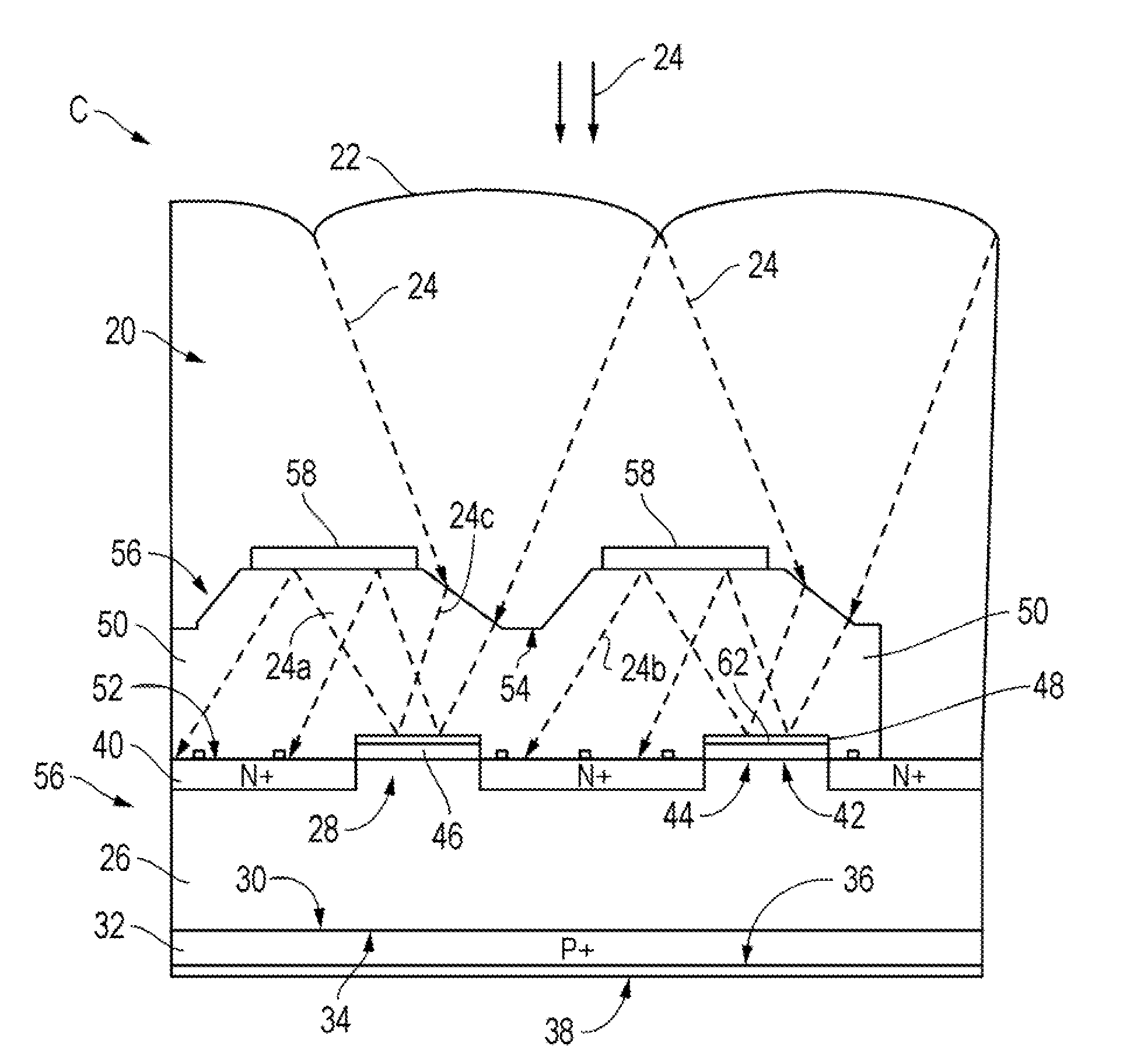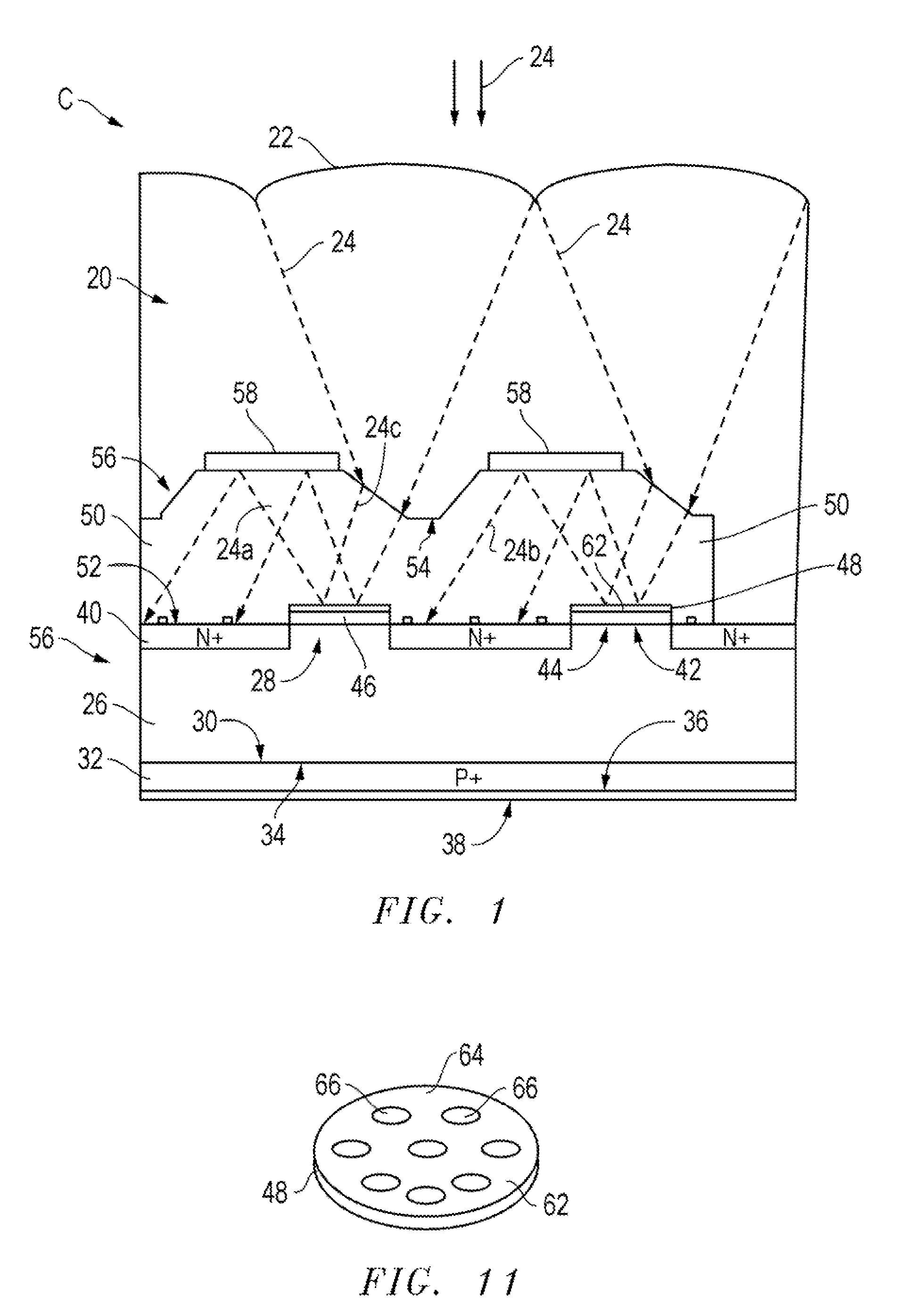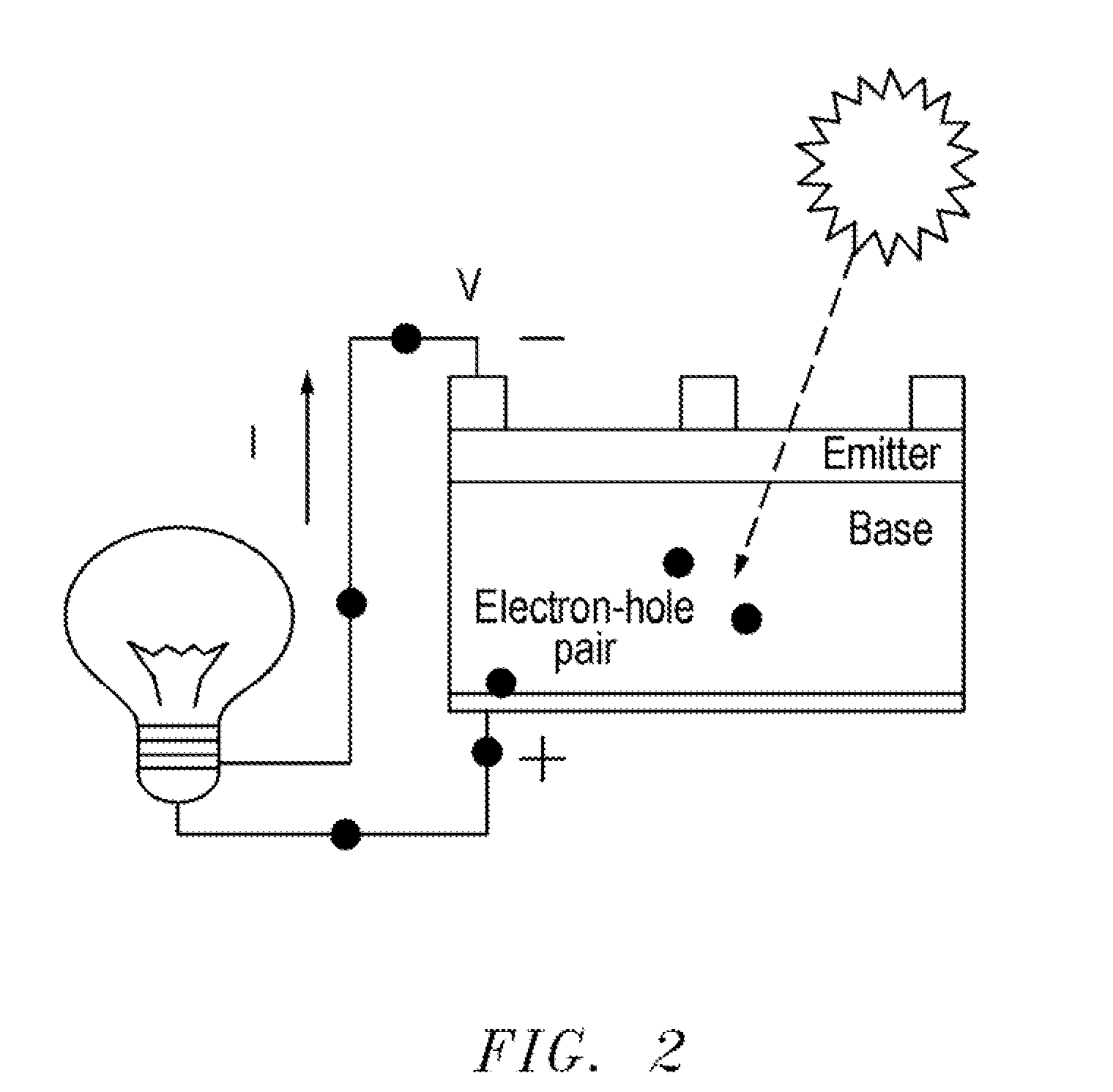Lateral ultra-high efficiency solar cell
- Summary
- Abstract
- Description
- Claims
- Application Information
AI Technical Summary
Benefits of technology
Problems solved by technology
Method used
Image
Examples
Embodiment Construction
[0038]So that the manner in which the above recited features, advantages and objects of the present invention are attained can be understood in detail, more particular description of the invention, briefly summarized above, may be had by reference to the embodiment thereof that is illustrated in the appended drawings. In all the drawings, identical numbers represent the same elements.
[0039]Referring particularly to FIG. 1, a high-efficiency lateral multi-junction tandem solar cell C of the present invention includes a micro-lens layer 20 that has an upper surface 22 formed into a micro-lens configuration to concentrate incident light or signal 24 impinging on the upper surface 22 of the solar cell C. The micro-lens layer 20 is preferably formed from a low refractive index material.
[0040]A primary, such as a P− type, semiconductor substrate slab layer 26, preferably of Silicon (Si), has an upper surface 28 and a lower surface 30. A comparable, such as a P+ type, semiconductor layer 3...
PUM
 Login to view more
Login to view more Abstract
Description
Claims
Application Information
 Login to view more
Login to view more - R&D Engineer
- R&D Manager
- IP Professional
- Industry Leading Data Capabilities
- Powerful AI technology
- Patent DNA Extraction
Browse by: Latest US Patents, China's latest patents, Technical Efficacy Thesaurus, Application Domain, Technology Topic.
© 2024 PatSnap. All rights reserved.Legal|Privacy policy|Modern Slavery Act Transparency Statement|Sitemap



